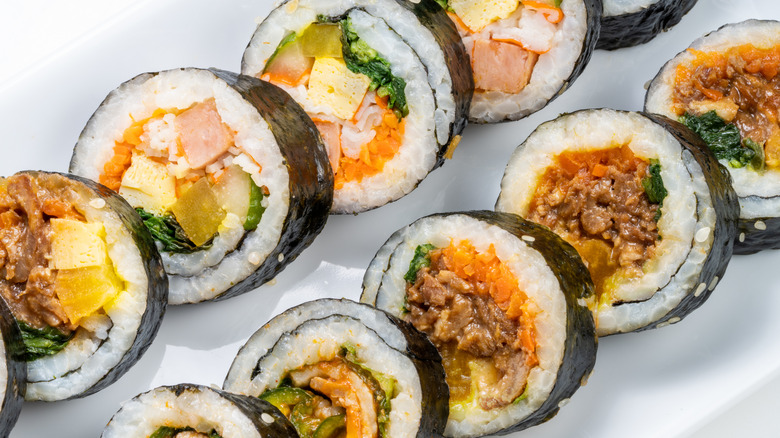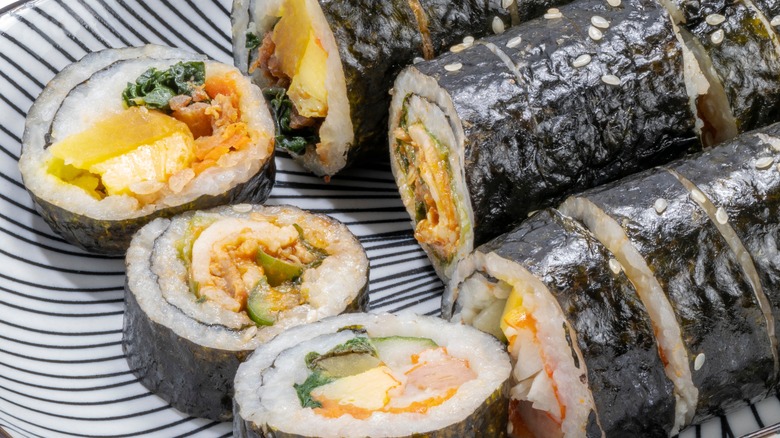The Filling Rule To Follow When Making Kimbap, According To Chef Ji Hye Kim
Kimbap is so enticing as an overloaded mashup of tasty filling that it may not seem like there are many rules or limits in place. A Korean dish of rice and seaweed wrapped around a variety of fillings, kimbap shares some similarities with Japanese sushi, but it's a very different eating experience. A big part of that comes down to the hearty mixtures of ingredients in kimbap. Often featuring ham, bulgogi, and egg, along with veggies and pickled ingredients, kimbap relies on a balance of flavors from numerous sources. With that complexity in mind, Tasting Table reached out to Chef Ji Hye Kim, founder of Miss Kim in Ann Arbor, Michigan, to learn about filling kimbap, and she gave us a few simple rules to follow to get the ideal results.
Kimbap often has a lot of fillings, but Kim told us that you should hold back a bit. She said, "You just need to make sure you don't stuff it to the point that you cannot roll the kimbap closed. So I'd say that would limit the number of toppings to eight or so." Eight ingredients is still quite a few, of course, and Kim notes that you shouldn't lose track of the essentials when building your Kimbap. She explained, "Even though I enjoy my kimbap on the simpler side, the rule to remember is that you want something crunchy and something pickled in there for the balance of flavor and texture."
How to balance kimbap
While maintaining the balance of kimbap can seem like an overwhelming task given the array of options, by paying attention to Kim's guidelines, you can put together a great recipe without overthinking things. One of the tricks to avoid overstuffing kimbap lies in how you prepare the fillings. Like sushi, kimbap is made by layering the fillings on top of your rice before rolling it up. So, to prevent overfilling, it's important to cut both your proteins and veggies into long, thin matchsticks. Ideally, they should be ¼ inch thick or less so that your roll will stay intact and each ingredient will blend into the whole instead of standing out and throwing off the balance.
For the pickles and crunch that Kim says are essential, common kimbap fillings in Korea offer a great guide. Carrots and cucumbers are mainstays in kimbap and add plenty of texture to your roll. Popular pickled ingredients can also double as sources of crunch. Pickled radish is the classic, but burdock root, an earthy root vegetable that can be pickled or braised, is also a great source of texture. And, of course, you have kimchi. It won't add as much crunch as radish or carrot, but its pickled, fermented flavor is unbeatable. Follow Chef Kim's easy guidelines, start with those basic ingredients, and you're on your way to perfect kimbap.

